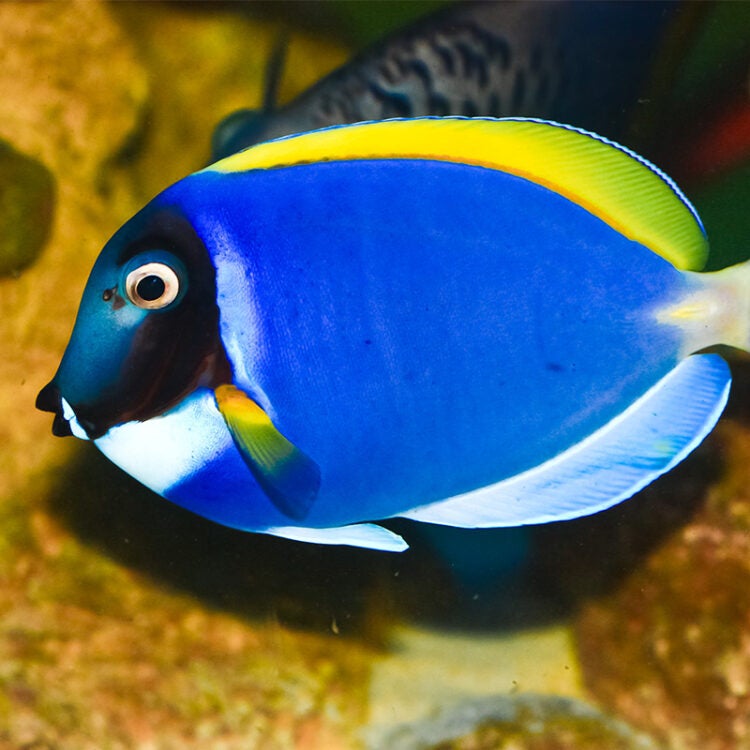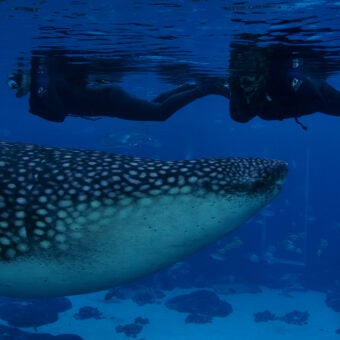-
Size
7.5 inches (19 cm) -
Diet
Algae -
Range
Indo-West Pacific -
Habitat
Reef environments, including reef flats and upper seaward slopes
Physical Characteristics
- Common length of 7.5 inches (19 cm). Maximum length of 21 inches (53 cm).
- The body is deep and laterally compressed.
- Coloration is light blue to purple with yellow dorsal fin and white anal and pelvic fins. The face is a dark blue to black from below the mouth to the base of the pectoral fins and over the eyes with a white band from the throat to the pectoral fin.
Animal Fun Fact
The powder blue tang forms monogamous pairs.
Diet / Feeding
- Diet consists of algae and other small growths.
Range / Habitat
- Occurs in the Indo-West Pacific from Eastern Africa to the Andaman Sea and Southwest Indonesia.
- Found in reef environments, including reef flats and upper seaward slopes at depths down to 82 feet (25 m).
Reproduction & Growth
- Oviparous, or egg-laying species.
- Monogamous, paired spawning.
Conservation Status
- “Least Concern” on the IUCN Red List.
Additional Information
- Also known as the “powder blue surgeonfish,” due to the sharp spine along either side of the caudal peduncle, which serves as a defense mechanism.
- May be seen singly or in large feeding aggregations.





